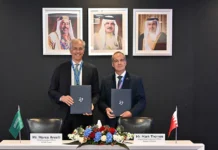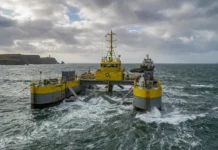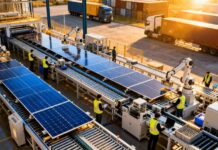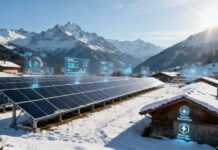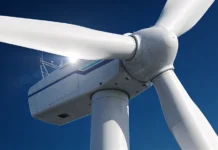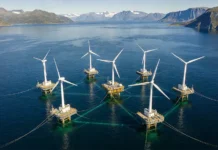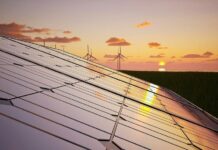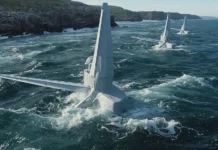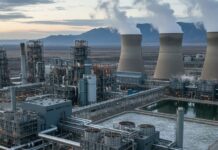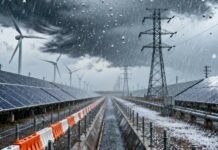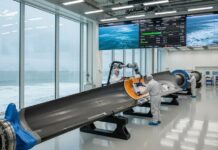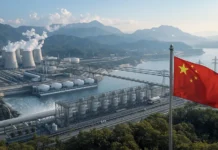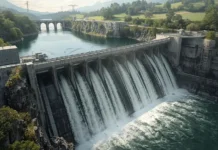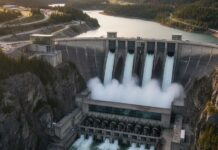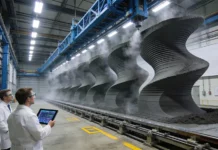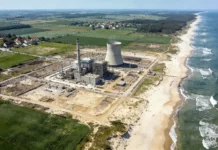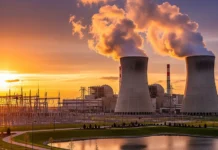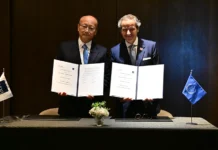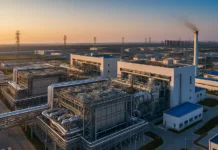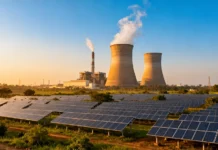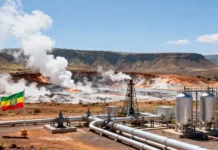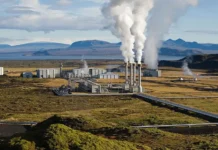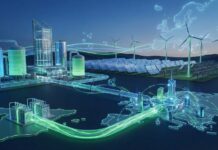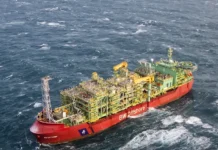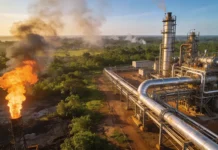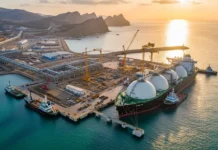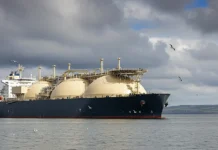The Ministry of Industry released the Electricity Master Plan Number Five in 2001 which outlined EVN’s continuing monopoly over power in Vietnam. A part of this master plan was that private power companies could only take a maximum of 20% of the country’ production, leaving EVN with at least 80%. Electricity demand has gone up by 10% a year over the last decade and Vietnam hopes to double its generation capacity before 2005.
Between 2000 and 2020, national power output is estimated to increase from 27 billion kWh to 200 billion kWh, and EVN is therefore working towards a national grid by 2020. This will include hydropower plants, three hydroelectric dams – the first of which opened in 2003 – and a nuclear power station by 2020.
MITSUI BABCOCK NATURAL CIRCULATION BOILERS
The plant has two Mitsui Babcock 922t/h natural circulation boilers. These reheat steam for two General Electric Model D5 tandem-compound double-flow turbines. There is also a wet flue gas desulphurisation plant and a new coal handling and blending facility.
The plant uses down-shot firing. Slot burners are placed in specifically arranged groups in two firing arches. Highly pulverised coal is fed through by four tube mills which need no standby provision. This is a consequence of their ability to run for long periods without overhaul. Air is removed from the beds by cyclones which reduce the mass of air and fuel, thus aiding ignition. Circulation is aided by the furnace’s octagonal design. Most of the combustion air comes through the firing arch. Pre-fired refractory tiles are used in the lower furnace to maintain temperatures.
Slag formation is prevented by a number of design features, with the membranes of the secondary and final superheaters specifically designed to prevent slag build up. They also help to prevent the distortion of equipment components. A curtain of air is injected down the front and rear walls to help oxidation. The plant was commissioned in July 2002, replacing the 1980s Russian facility.
The plant was the first to be erected using imported western technology. The $125 million contract work was performed by a consortium of Sumitomo Corp., Mitsui Babcock Engineering Ltd, Stone & Webster Corp. and Hyundai Engineering & Construction Co. Japan’s Overseas Economic Co-operation Fund (OECF) helped to provide funding.
FUELS AND EMISSIONS
Coal was chosen for the new plant because of an abundant local supply of anthracitic coal. The Vietnamese coal used in the facility comes from the Cam Pha, Hon Gai and Uong Bi fields within the Quang Ninh coal basin. Anthracites and semi-anthracites have high residues; the ash content can be as much as 30%. The qualities of the different coals are different depending on which colliery they come from.
To design a suitable plant, the Vietnamese coal was subjected to elaborate tests at a single burner facility in the UK. 3D computational fluid dynamics were also used to predict the behaviour of the plant. This computer modelling was based on a similar existing anthracite facility in China. The computer modelling encouraged Mitsui Babcock to adopt alternative burner slot positions that improve the recirculation of rising hot gases into the root of the flame, making ignition easier. Thus, the modelling and testing had the aim of optimising both generation efficiency and pollution levels.
NITROGEN OXIDE EMISSIONS
A central concern of Electricité de Vietnam was nitrogen oxide emissions. The computer modelling was also helpful in this respect. Highly stabilised flames are short and lack penetration in a down-shot furnace. This makes them hotter, creating more NOx. In this plant, flame stability is given by external recirculation of hot gases to the periphery of each group. Penetration comes through the delayed combustion at the centre. As a result of Mitsui Babcock’s technical improvements to the boilers, the company estimated that nitrogen oxide emissions would be reduced by as much as 15% to 30%.



